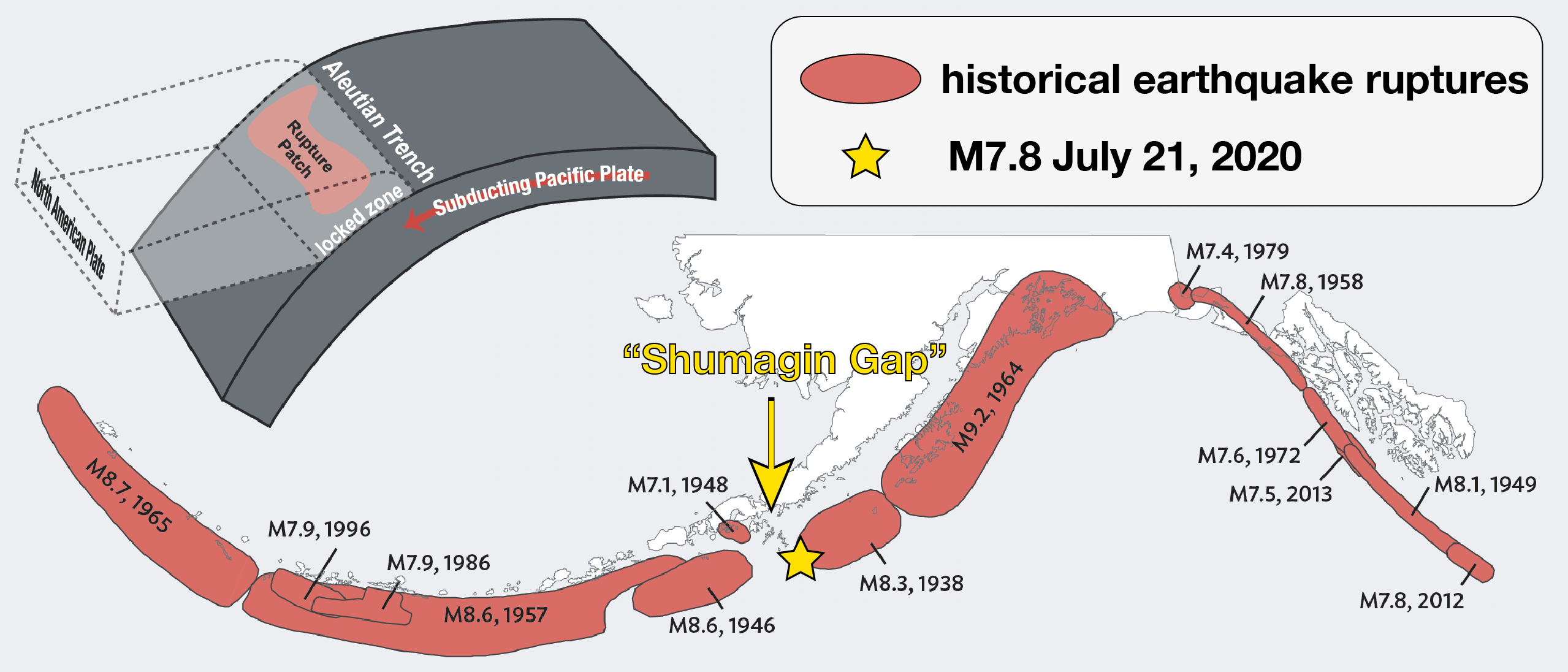2020 M7.8 Simeonof Earthquake and M7.6 aftershock
The July 21, 2020 (July 22, 06:12 UTC) M7.8 earthquake occurred on the well-known subduction zone interface off the Alaska Peninsula. Strong shaking was reported from Perryville and Sand Point to King Cove and Cold Bay. Weak shaking was felt more than 500 miles away in the Mat-Su and Anchorage areas. Three months later on October 19, a M7.6 aftershock shook the region again. The National Tsunami Warning Center issued tsunami warnings for much of the Alaska Peninsula prompting evacuations following both events. Several Alaska Peninsula communities also reported damage.
These two earthquakes were also some of the most scientifically interesting of 2020. Historically, large earthquakes have occurred along the Aleutian Islands chain, with the exception of the region near the Shumagin Islands. Seismologists have long suspected the “Shumagin Gap” would eventually experience a large earthquake. The M7.8 earthquake struck the Shumagin Islands region, just south of Simeonof Island, followed by the M7.6 aftershock. The Simeonof Earthquake series partially filled this long-recognized seismic gap.
There are more differences than similarities between the two earthquakes. The July M7.8 mainshock ruptured a section of the megathrust boundary between the subducting Pacific and overriding North American tectonic plates. As the Pacific Plate creeps northward at a couple of inches per year it is slowly forced beneath the North American Plate. These plates typically lock together and rupture on occasion in large earthquakes such as this. When an earthquake occurs, it ruptures a "patch" of this fault that can be 10s to 100s of miles long. Early evidence suggests that this earthquake ruptured a patch that is up to 100 miles or so in length. The October rupture zone is much smaller than the M7.8 fault and located farther off-shore and closer to the ocean trench where the tectonic plates meet. The M7.6 earthquake had a different source mechanism (or faulting type) and was possibly associated with a fault inside the subducting Pacific plate rather than on the plate interface. Prior to the October 19 aftershock, we recorded over 2,200 aftershocks with the largest magnitude of 6.1. The M7.6 earthquake generated its own aftershock sequence, which has produced more aftershocks than the M7.8 sequence. Combined we have recorded more than 6,400 aftershocks.
Though this style of earthquake is quite common, the specific location will continue to generate a lot of scientific interest.

This is an ongoing sequence and we will update this page as the event unfolds.






